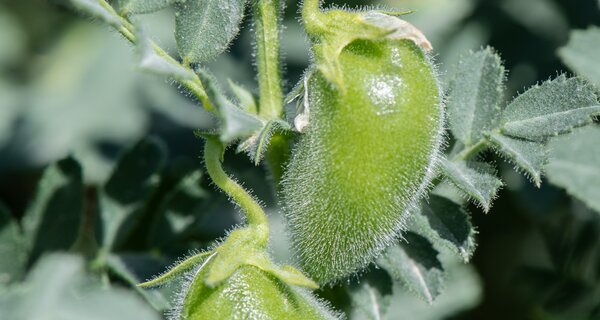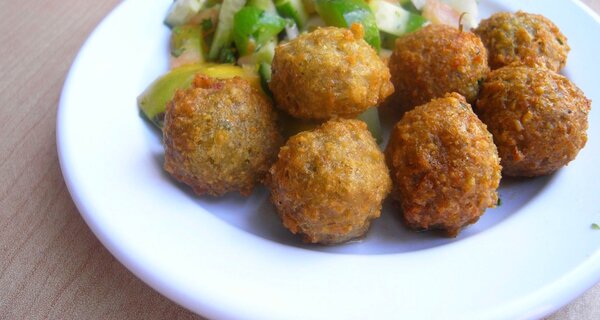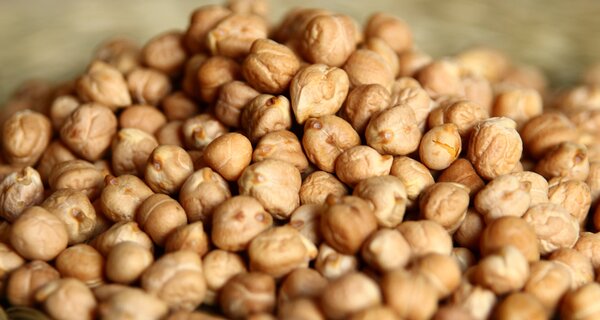Beyond Hummus
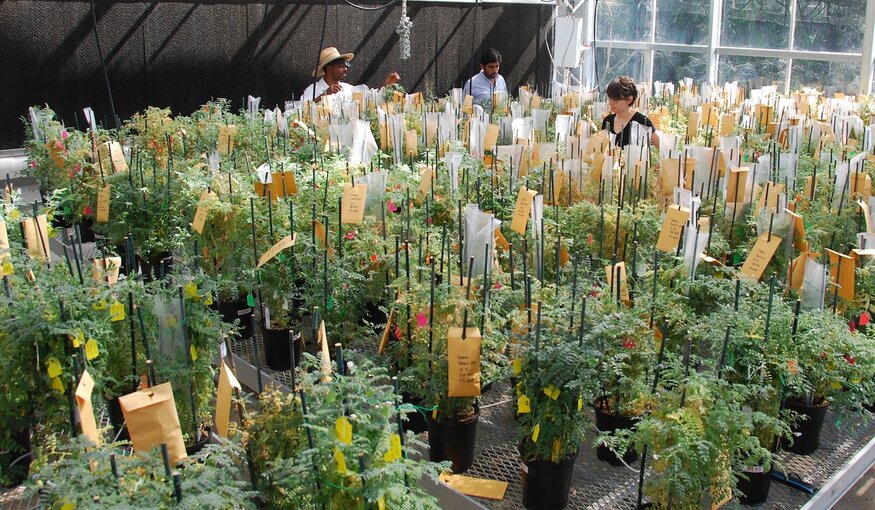
Researchers with the Chickpea Innovation Lab at one of the UC Davis greenhouse facilities carrying out advanced crossing of F2 populations. Photo: University of California-Davis
10 February 2023
To some, chickpeas are synonymous with hummus. But that’s a pretty limited view of a crop that is the second most eaten pulse in the world.
Chana dal, Burmese tofu, farinata di ceci, chana masala, chakhchoukha, guasanas. They’re all national dishes based on the same ingredient – the little ram’s head-shaped seed that gave the famous Roman orator Cicero his name.
Chickpeas are an enormously important staple food crop from Australia to Canada, Argentina to India, producing good yields in drier conditions.
But not completely dry conditions. A reliable and sufficient water supply isn’t always available nowadays, particularly as our changing climate is bringing greater extremes in rainfall patterns. Drought is perhaps the most important reason why we may not find as much hummus or falafel on our plates as we’d like in the future. Globally, drought can reduce chickpea yields by up to 50%, occasionally more.
“Chickpeas, like many crops, walk a tightrope with water. Too little, and the crop suffers drought stress. Too much, at the wrong time, exposes it to devastating fungal disease,” says Doug Cook, the director of the Feed the Future Innovation Lab for Climate Resilient Chickpea based at the University of California-Davis. “And people all over the world are getting a bigger appetite for hummus and other chickpea-based foods. To satisfy that hunger, farmers will need bigger harvests. For this to happen, plant breeders will need to provide farmers with new, improved chickpea varieties that grow with less water and are more resistant to pests and diseases.”
Where Has All the Chickpea Diversity Gone?
Easier said than done. “Our ancestors first domesticated wild chickpeas about 10,000 years ago,” says Cook. “As the domestication process progressed, we have lost a tremendous amount of diversity – diversity that wild chickpeas originally had.” That makes it pretty hard to breed better crops.
Cook and his colleagues turned their attention to wild relatives of chickpeas in their quest to develop more drought-tolerant chickpeas. “Our modern cultivated chickpea, Cicer arietinum, has two relatives out in the wild: Cicer echinospermum and Cicer reticulatum,” says Cook. “These wild cousins are different species, but we can still cross them using pretty simple methods with our modern chickpea.”
Cicer reticulatum in particular is estimated to have at least 20 times the genetic diversity of the cultivated species, and therefore probably hosts a wealth of untapped characteristics that could add resilience to its tamer, less diverse counterpart.
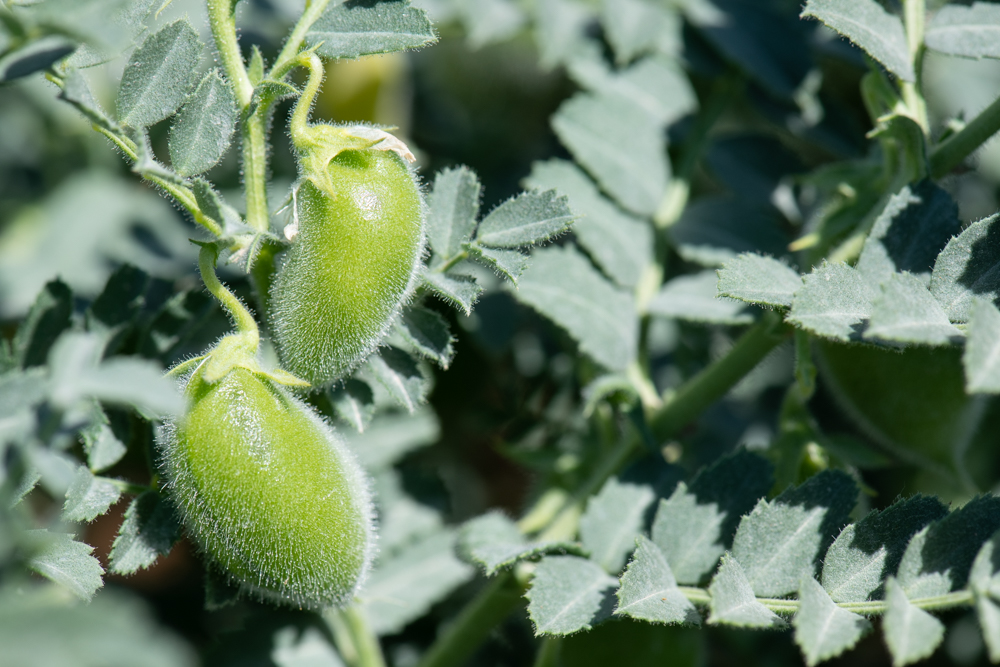
Grown around the world, from Australia to Canada, Argentina to India, chickpeas are an annual crop which produce good yields in drier conditions. Photo: Michael Major/Crop Trust.
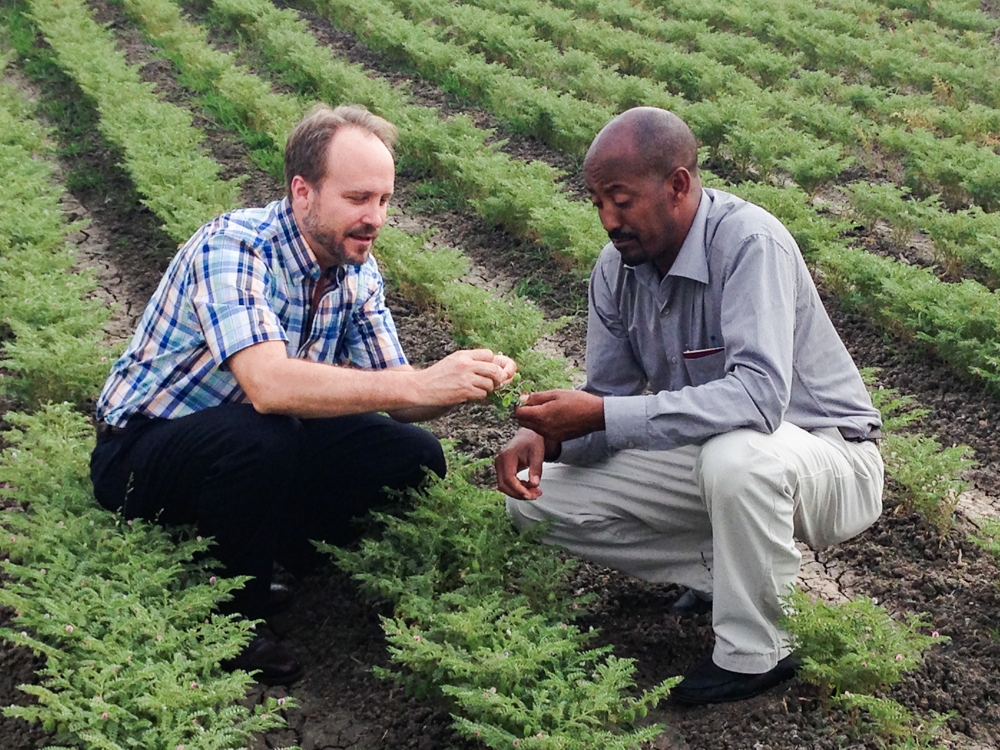
Dr. Asnake Fikre (Ethiopian Institute of Agricultural Research) and Professor Cook (UC Davis) discuss the attributes of cultivated chickpea in an experimental plot at the International Crops Research Institute for the Semi-Arid Tropics (ICRISAT). Photo courtesy of Doug Cook
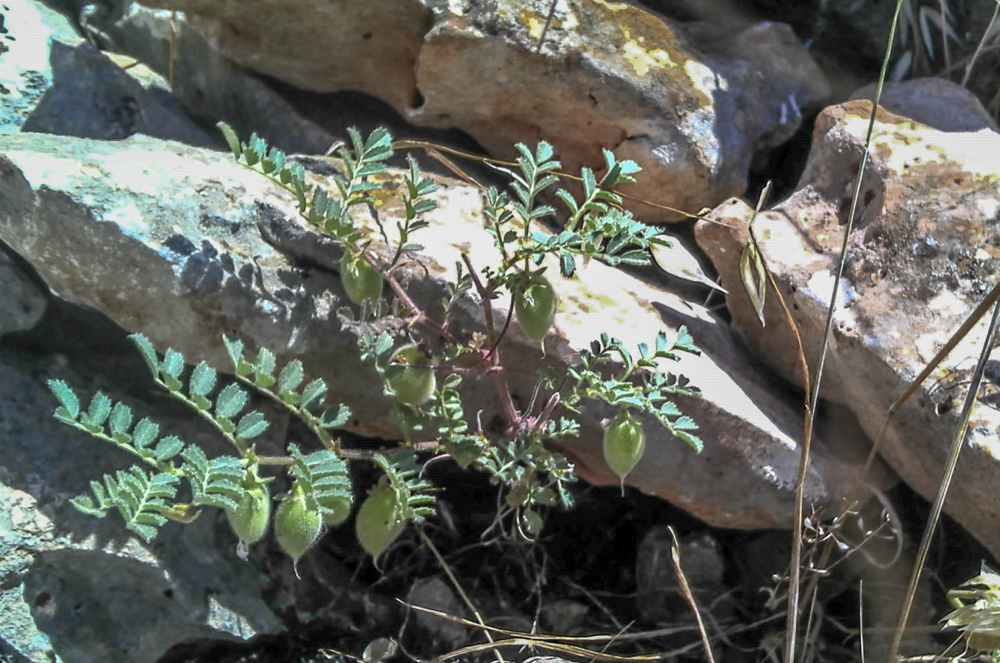
Chickpea's wild progenitor, 'Cicer reticulatum', is often found tucked away among rocks, or near the base of trees, or under bushes. Photo courtesy of Doug Cook
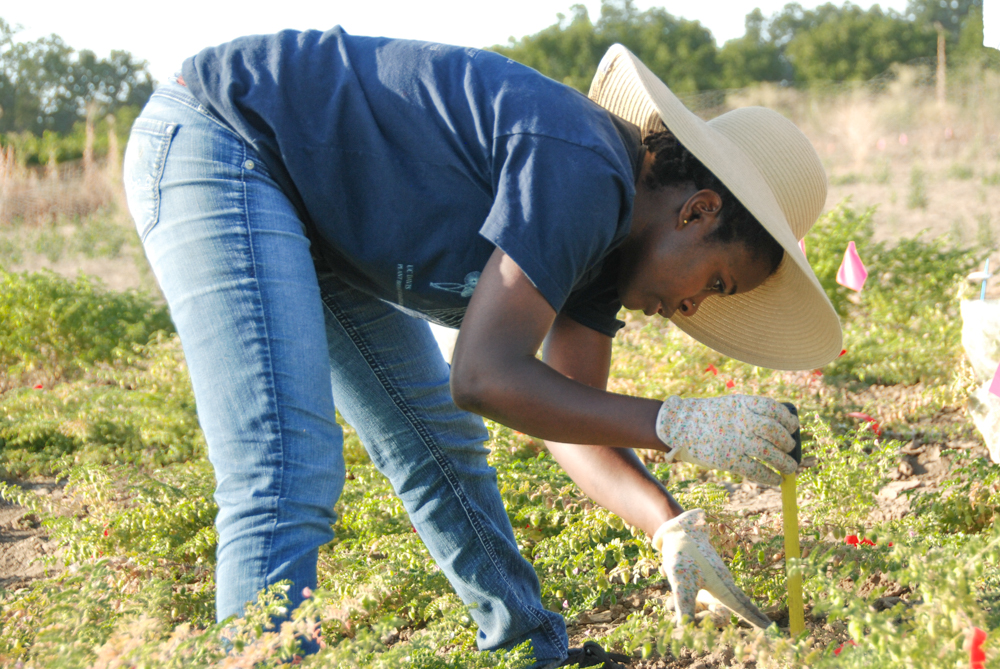
Susan Moenga, a graduate student at UC-Davis and supported by the Crop Wild Relatives Project, measuring canopy height. Photo courtesy of Doug Cook
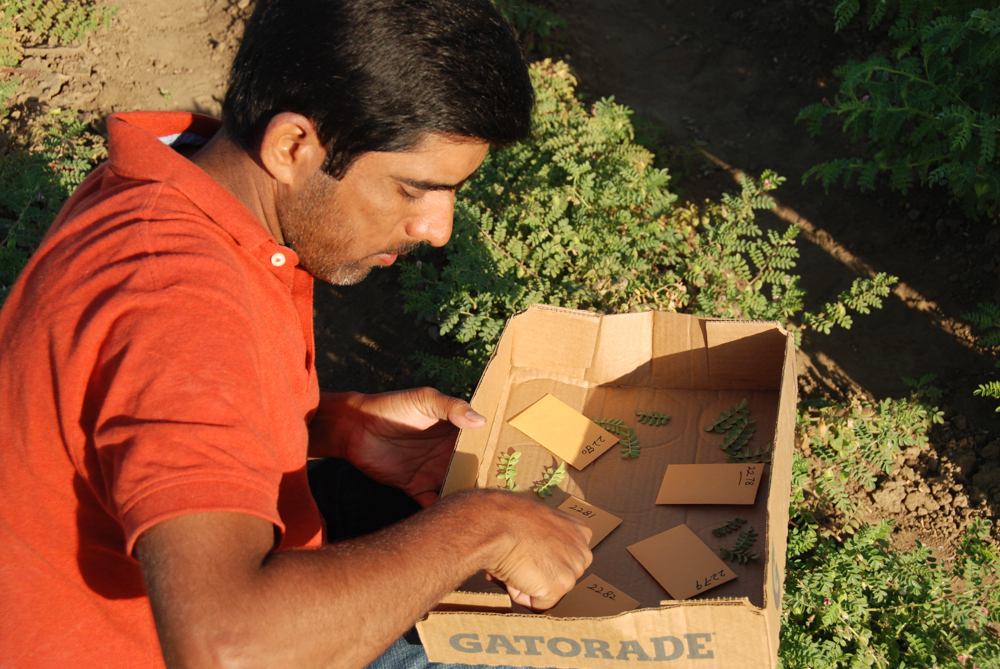
PhD student Syed Gul Abbas Shah Sani harvesting chickpea leaves for leaf area and leaf shape studies. Photo: Doug Cook
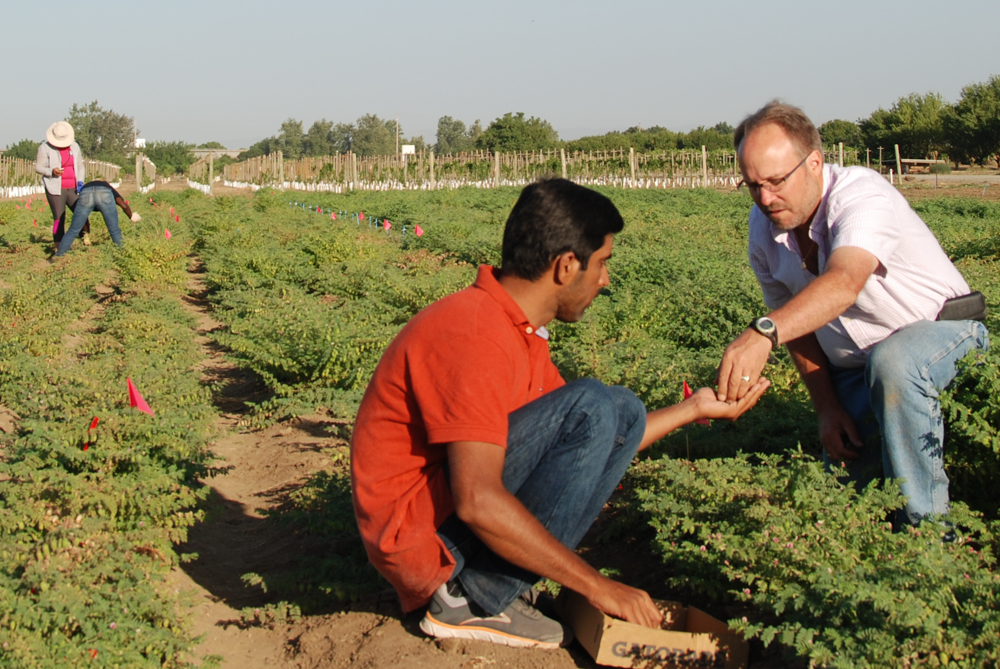
Douglas Cook and Syed Gul Abbas Shah Sani phenotyping young plants. Photo courtesy of Doug Cook
Getting To Know the Relatives
Cook’s team first had to get better acquainted with the diversity of wild chickpea relatives: they collected hundreds of seeds in Turkey and conserved them in genebanks. But if you have a family reunion with 2,000 distant cousins you will struggle to know them all – unless they wear name tags. “Phenotyping! That’s how we get to know these relatives,” Cook says. “We grow the seeds under controlled conditions, observe their characteristics and record the resulting data. Phenotype is just a fancy word for what a plant – or person, for that matter – looks like and how it behaves.”
As the plants grew, Cook and his team described how they responded to drought. The observations helped them better understand how the wild chickpeas have developed different physiological strategies to respond to drought. But that’s not all.
“We were focused primarily on drought tolerance, but as we phenotyped the material we found a veritable candy store of traits that have potential agronomic value,” Cook says. “We found wild relatives with tolerance to heat, more effective nitrogen fixation, increased protein content, altered seed characteristics, resistance to major fungal and insect pests, and even tolerance to acid soils. This is a clear example of the wealth of traits that crop wild relatives can offer to breeders.”
The team is now using genetics and genomics to map the genes for these traits, which will help scientists shorten the time required in their breeding programs because it’s easier to read a plant’s DNA than to grow it out under different conditions for phenotyping.
Working with these crop wild relatives can be a thankless job at times. “But it is nonetheless a critical one, that will allow others to make use of the diversity locked-up in these scrawny little plants,” adds Benjamin Kilian, a senior scientist at the Crop Trust, which supported the chickpea work as part of the recently ended 10-year Crop Wild Relative Project, funded by the government of Norway.
There’s little doubt that chickpea farmers will be sorely challenged by the extremes caused by climate change. But the work done by the Crop Wild Relatives Project, including by partners like Cook and his team, shows that if we find a place at the dinner table for wild relatives, there will be enough hummus, chana masala and farinata di ceci to go around.
This article first appeared online on Food Tank.
Categories: Crop Wild Relatives, Chickpea
About the Crop Wild Relatives Project
The Crop Wild Relatives Project was developed to collect important species of crop wild relatives, ensure their long-term conservation and facilitate their use in breeding new, improved crops. This 11-year project was launched in 2011 with USD 50 million in funding from the Government of Norway. Managed by the Crop Trust with the Royal Botanic Gardens, Kew, the project was implemented in partnership with national and international genebanks and plant breeding programs around the world. The work is continuing under the “Biodiversity for Opportunities, Livelihoods and Development” (BOLD) Project, which is also funded by the Government of Norway.


